It is celebration time once again, after four years, for the mathematics community across the globe as it gears up for the International Congress of Mathematicians (ICM), to be held in Brazil during August 1–9 this year.
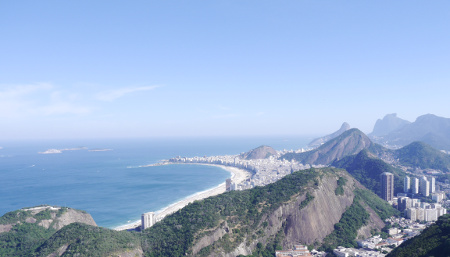
The previous ICM, in 2014 in Seoul, was unique in its own way for the world of mathematics—it was the first time a woman mathematician won the Fields Medal, and it was the first time a mathematician of Indian descent shared the prestigious honour with her, as well as with two others. Maryam Mirzakhani, Manjul Bhargava, Artur Avila and Martin Hairer were the stars who etched their names permanently in the history of signal human achievements—especially so, as permanence of a discovery is an attribute quite unique to mathematics. The work of mathematicians from remote antiquity is as valid today as when it was done centuries ago.
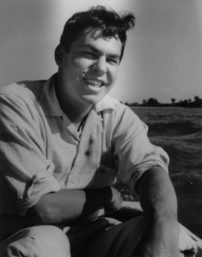
While this is the first time the ICM is being held in Brazil, the city that will host ICM 2018 has previously inspired at least one Fields Medal recipient. “My best-known work was done on the beaches of Rio de Janeiro,” recounted Stephen Smale, who won the Fields Medal in 1966 for his work on the Poincaré conjecture in higher dimensions. Smale associates discovering the all-important Smale horseshoe map while on a beach in Rio.1
Over the years, the ICMs have played a major part in showcasing the role of mathematics in the continued advancement of knowledge, and its unmatched relevance to the real world. It is an event that every mathematician eagerly looks forward to. It is an event where a handful of outstanding young achievers are bestowed the highest honour in mathematics—the Fields Medal.
What happens at the ICM?
The opening ceremony on day one is the most impressive event of the ICM. The sheer number of participants gathered, of the order of four to five thousand, is perhaps the biggest congregation of world mathematicians at one place, and this dictates that the ceremony is conducted in a large auditorium measuring up to the occasion. It happens in a building different from the one where the rest of the week-long proceedings take place.
It is an incredibly satisfying feeling for any mathematician to see that it is mathematics—that typically scary and unglamorous topic in schools for most others—that has drawn people in thousands to travel from across the world.
The main attraction at the opening ceremony is of course the pronouncement and award of the Fields Medals which, until that moment, remains a closely guarded secret. Mathematicians are literally on the edge of their seats before the announcements are made. Over the years, there have been many more awards and honours instituted, and the excitement calms down as the morning proceedings come to a close. One of the main features of that very afternoon are the various prize laudations where the significant accomplishments of the awardees are highlighted in addresses by leading experts.
That would be the time when each of the awardees is overcome with gratification that one’s long and arduous work is being so widely recognised and appreciated. In the highly charged atmosphere each one feels proud of the finer nuances of the trade they know, and it is easy to spot groups of people talking about their favourite results, explaining things they are working on to their friends they haven’t met in a while or to the new acquaintances they come across.
The second day onwards, the event proceeds more or less in a standard format with plenary lectures, the award lectures, invited lectures, short communications, poster presentations and panel discussions, covering all areas of mathematics. Giving these lectures at the ICM, especially the plenary addresses, is a rare honour in itself that only select mathematicians receive.
The plenary lectures, of which there are about twenty, as well as the various award lectures, which are an hour each, are not held with any other sessions in parallel. Whereas the invited lectures, which are of 30 or 45 minutes each, are held in about ten parallel sessions with three to fourteen lectures in each session. The plenary lectures provide an overview of the state of several different thrust areas in mathematical sciences, and are given by eminent players in the area who are chosen based purely on their academic accomplishment and established mastery over their areas of present research.
It is not just the ICM week that mathematicians eagerly look forward to, but the entire month centering around the ICM, which is typically flooded with anywhere between 30 to 50 satellite conferences organized in the travel-compliant neighbourhood of the ICM venue. The topics of satellite meetings are usually the frontline research areas typically represented by mathematicians in the host country. The dates of these conferences do not overlap with that of the ICM. Together with the satellite conferences, the ICMs offer a rich and wholesome mathematical fare, once every four years, for one full month or more.
Apart from the Fields Medals, awarded since the 1936 ICM in Oslo, the other prizes that are awarded include the Rolf Nevanlinna Prize (instituted in 1986), and the Carl Friedrich Gauss Prize (since 2006). The most recently initiated prizes since the ICM 2010 that took place in Hyderabad in India, are the Chern Medal Award, instituted by the Chern Medal Foundation, and the Infosys-sponsored Leelavati Prize for excellence in mathematical outreach.
History of the ICMs
The International Mathematical Union (IMU) is the body that is in charge of administering the ICMs and awarding the various prizes. Although the history of the ICMs dates back to 1897 when the first ever ICM was held in Zurich, the IMU itself came into being only in 1920. Perhaps because of the turmoil during the world wars and the then prevailing unstable political situation, the IMU was dissolved in September 1932 and was re-established in 1951, as per a resolution, and as soon as ten countries became members. However, it is only since 1962 that the IMU has been administering the conduct of the ICMs, typically held in the month of August.
The main mandate of the IMU is to promote international cooperation in mathematics. It is a member of the International Council for Science (ICSU). The members of IMU itself are not individuals but countries that are represented through an “Adhering Organization”, such as an “academy, a mathematical society, its research council or some other institution or association of institutions, or an appropriate agency of its government.”
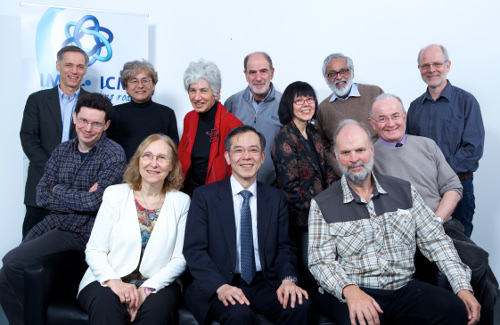
Having a membership of over 85 countries presently, and successfully orchestrating the ICMs every four years, the IMU has grown from strength to strength, and has evolved as the unified public face of the entire mathematics community across the world.
As a testimony to the sensitive handling of affairs by the IMU, one may recall the politically volatile time in Poland clouding the organization of the ICM in 1982 in Warsaw. The unstable situation in Poland meant that it was very difficult to go through with the ICM as planned in August of that year. Therefore, at its Executive Committee meeting in April 1982, the IMU, under the circumstances, took two important decisions: to postpone the ICM by one year, and to hold only the General Assembly, an in-house organizational meeting, in 1982. Thus, while the prizes were first announced in 1982, they were actually awarded only at the ICM event held a year later, during 16–24 August, 1983. It was perhaps the first time that the names of the prize winners did not come as a surprise.
But what prompted mathematicians to initiate such a transcending activity of bringing together people from all over the world, and when did it all begin?
The nineteenth century not only saw great advances in the development of mathematics in diverse areas such as algebra, geometry, number theory, and analysis, but also witnessed the strong influence of mathematics on other branches of science and engineering. “[T]here is nothing more practical than a good theory,” said Theodore von Kármán, the eminent aerospace engineer and fluid dynamicist, essentially capturing this sentiment.
The inner urge of a mathematician to communicate a finding is eloquently articulated in the following words of Adolf Hurwitz in his plenary address at the first ever ICM in Zurich, 1897:
“It is true that most of the great ideas of science have raised and matured in the silence of the working studio; no other science, but possibly for philosophy, presents a character so eremitic and secluded as mathematics. And yet, in the heart of a mathematician lives the necessity for communicating and expressing himself to his colleagues.”
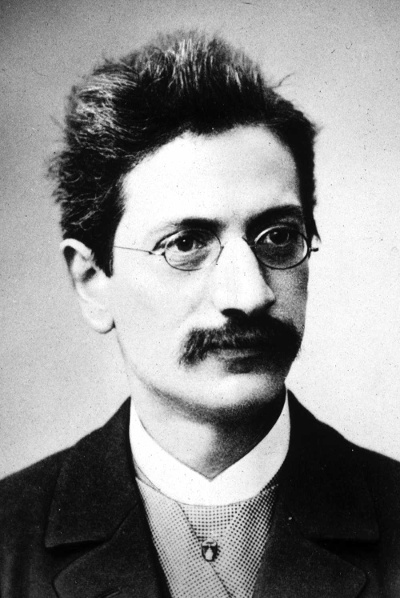
With more than a hundred-year long history, the continuing legacy of the ICMs presents an extraordinary story, fostering the spirit of universality, lastingly perpetuated by the uniting and binding force that mathematics is. Indeed, the main objective of the ICMs has been to convene mathematicians from across the globe, and providing a platform to present recent advances and new ideas. “Each of the mathematicians know by their personal experience how stimulating personal scientific intercourse can be,” said Hurwitz in his address at the inaugural ICM.
The second ICM in 1900 in Paris is remembered for the iconic address by David Hilbert who listed out 23 problems, eventually keeping much of twentieth century mathematics busy. “Who of us would not be glad to lift the veil behind which the future lies hidden; to cast a glance at the next advances of our science and at the secrets of its development during future centuries?”—he grandly began his lecture at nine in the morning on 8 August 1900 which, in fact, was not a plenary lecture; in the available time, he could only present ten of those problems. Setting an engaging tone he continued probingly: “What particular goals will be there towards which the leading mathematical spirits of coming generations will strive? What new methods and new facts in the wide and rich field of mathematical thought will the new centuries disclose?”2
However, the journey of the ICMs itself in those early years wasn’t without its share of having to deal with difficult situations. No ICMs took place between 1912 and 1920, and between 1936 and 1950, owing to the two world wars.

The war tensions had even led to a controversy on whether to count or discount two meetings, the 1924 one in Toronto and the 1928 one in Bologna, from the series of ICMs. The dilemma is beautifully expressed with mathematical precision by Hermann Weyl in his address at the opening ceremony of the 1932 ICM in Zurich: “Here we attend to an extraordinarily improbable event. Given the number n corresponding to the recently opened International Congress of Mathematicians, we have the inequality 7 \leq n \leq 9; unfortunately our axiomatic foundations are not sufficient to give a more precise statement.” Nonetheless, the 1932 ICM itself, in which Emmy Noether became the first woman mathematician to give a plenary talk at an ICM, went off smoothly.
The genesis of the Fields Medal can actually be traced to the 1924 ICM in Toronto, the first one to happen outside Europe. John Charles Fields, the president and main organizer of this Congress put in such a remarkable effort to ensure its success, that an amount of over 2700 Canadian dollars remained as surplus after the event! After deliberations, a few years later it was decided that a part of this money should be set aside for awarding two medals at successive ICMs. Sadly, Fields, who was going to present the proposal himself for approval at the ICM, suffered a heart attack in 1932 and died in early August, about a month before the ICM held in Zurich that year. At the next ICM in Oslo in 1936, the first two Fields Medals were awarded. But the ICM was interrupted for the next 14 years due to WWII, and resumed again in 1950 at Cambridge, USA.
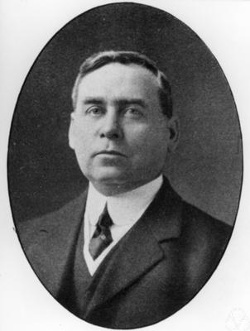
In his presidential address to the 1954 ICM in Amsterdam, J.A. Schouten emphatically stated that “the place of mathematics in the world has changed entirely after the second [world] war.” Expanding on that point, he continued: ”Before, mathematics had an honourable place among the sciences because of its central position, its history and its traditions, but there were in those times not many mathematicians and most people had only some bad memories from their school years and the comforting idea that in real life they would meet mathematics never more… During and after the war it became obvious to everyone that nearly all branches of modern society in war and in peace need a lot of mathematics of all kinds, from the simplest school arithmetics up to the highest developed theoretical parts.”
“[N]owadays no big factory without its computing machines and no investigation involving series of experiments or observations is possible,” he went on to say, “without an elaborate application of modern statistics… Thus mathematicians of all kinds are needed in numbers our ancestors could not have dreamt of, and universities all over the world are constantly busy producing more of them.”
India, the IMU and the ICMs
Even as India keenly awaits its own first indigenous Fields Medalist, the entire nation celebrated when Canada-born Princeton University mathematician Manjul Bhargava was anointed with the coveted honour at ICM 2014 in Seoul.
The wide celebration of Manjul Bhargava’s achievement could perhaps be compared only to the time in 1918, to date exactly a hundred years ago, when the extraordinary genius of Srinivasa Ramanujan was recognised by the Royal Society of London through his election as its Fellow—the honour of FRS. A hundred years later, during 15–16 October 2018 at the same Royal Society of London, Manjul Bhargava will be speaking at the commemoratory event Srinivasa Ramanujan: In Celebration of the Centenary of His Election as FRS.
The first Indian presence at the ICMs, however, dates back much earlier to the fifth Congress that took place in Cambridge in 1912, which lists three participants from India out of a total of 54 members in its list of the distribution of members according to nationality. With Damodar Dharmananda Kosambi’s presence in the Fields Medal Committee of the 1950 ICM, the Indian presence became a more distinguished one.
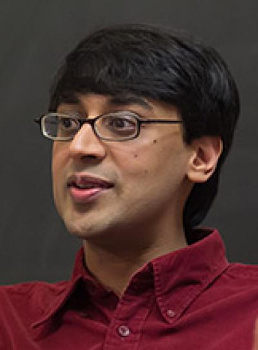
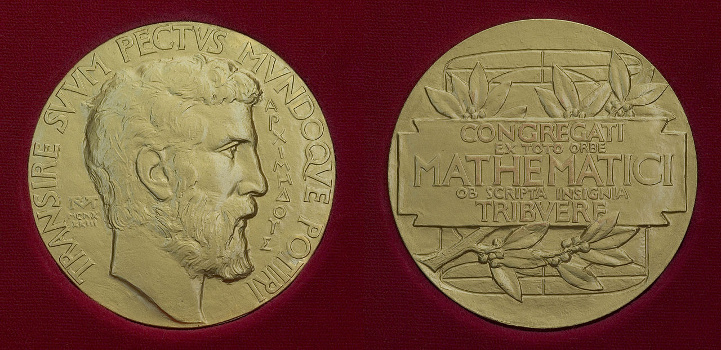
The arrival of Komaravolu S. Chandrasekharan (KC) on the scene soon afterwards meant that the Indian connection became an inseparable part of the IMU and ICMs. When KC passed away last year at the age of 97, the IMU-Net news bulletin4 recorded the following in an obituary note:
Chandrasekharan had a long and important association with the IMU, in diverse roles: as a Member of the Executive Committee of the IMU (1955–1978), as Secretary (1961–1966), and as President (1971–1974). He was a member of the Consultative Committee for the Stockholm Congress (1962), a member of the Fields Medal Committee for the Edinburgh Congress (1958) and Chairman ex-officio for the Vancouver Congress (1974). He edited and published, through the Tata Institute, the first three editions of the “World Directory of Mathematicians”, on behalf of the IMU, which was an important resource in the pre-internet era. He was also a Member of the first Constitutive Committee in New York in 1950 that prepared the Enabling Resolution which led to the formation of the IMU in its present form, and was involved in the drafting of the IMU statutes.
He was an extraordinarily gifted organiser and administrator of Science. Apart from his achievements at the Tata Institute, and his extensive involvement with IMU, he was also a Vice-President of ICSU (1963–66) and Secretary-General of ICSU (1966–70); this helped to strengthen the relationship of IMU with ICSU. His personal contacts with a large number of influential mathematicians from all over the world and his administrative skills made the functioning of IMU effective and strengthened it, especially during the Cold War period. He was one of the influences behind the IMU’s increasing involvement with developing countries.
“For decades he was a spiritus rector in the Union,” in the words of Olli Lehto, in “Mathematics Without Borders—A History of the International Mathematical Union”.
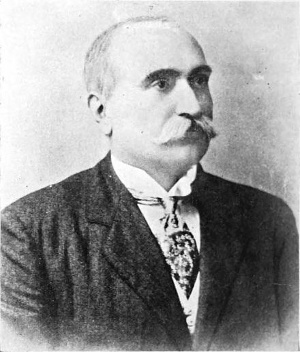
KC was a member of the Fields Medal Committee of the 1958 Congress in Edinburgh, in which the renowned mathematician, Harish-Chandra was one of the nominees for the top honour. Harish-Chandra, who started out as a physicist, finishing his PhD in Cambridge with Paul Dirac, was a faculty member at Columbia University at the time. Switching over to mathematics soon after, he had distinguished himself by his path-breaking contributions to infinite-dimensional group representation theory.
Harish-Chandra was already an invited speaker four years earlier at the Amsterdam Congress, and it was not surprising that his name was shortlisted for the honour in 1958. Relating the episode, Robert Langlands, a permanent member at the IAS Princeton and the Abel Laureate for 2018, wrote5 that: “He was considered for the Fields Medal in 1958, but a forceful member of the selection committee in whose eyes René Thom was a Bourbakist was determined not to have two. So Harish-Chandra, whom he also placed on the Bourbaki camp, was set aside.”
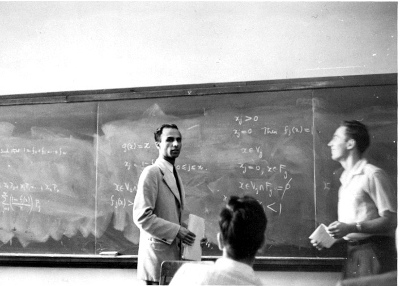
Nevertheless, Harish-Chandra went on to firmly establish himself, through his relentless contributions, as one of the most impactful mathematicians of the last century. He was invited to deliver a plenary address at the 1966 ICM in Moscow, and was a permanent member of the Institute for Advanced Study in Princeton for the last twenty years of his life.
KC may undoubtedly have played an important role, as the circumstances that led to increasing the number of Fields Medal awards at the 1966 ICM in Moscow from two—out of the funds bequeathed by J.C. Fields—to up to four has an interesting Indian connection. Around the time of the Moscow ICM, the Sir Dorabji Tata Trust in India came forward to institute two new medals, similar to the Fields Medals. But the project couldn’t fructify because of certain official statutes coming in the way of enabling the transfer of money. “In any case,” writes Guillermo Curbera in Mathematicians of the World Unite!, “that year, due to an anonymous donor (whose name is still unknown), it was possible to award four Fields Medals.”
In recent years, two mathematicians of Indian origin were awarded the Rolf Nevanlinna Prize which is meant for “outstanding contributions in Mathematical Aspects of Information Sciences”. Madhu Sudan, presently at Harvard University, won it in 2002, and Subhash Khot, of the Courant Institute of Mathematical Sciences, won it in 2014.
Over the years, many more eminent mathematicians from India have delivered invited talks at the ICMs, held high offices of the IMU and have played a significant role in placing India as one of the top countries in the world of mathematics. Presently, Vasudevan Srinivas of TIFR Mumbai is an Executive Committee member of the IMU.
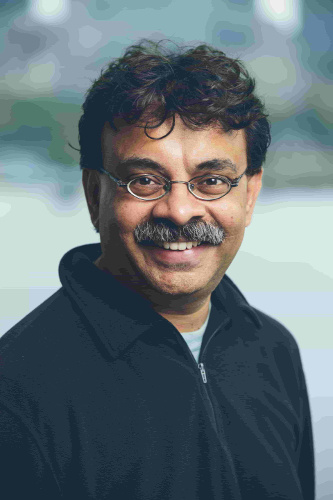
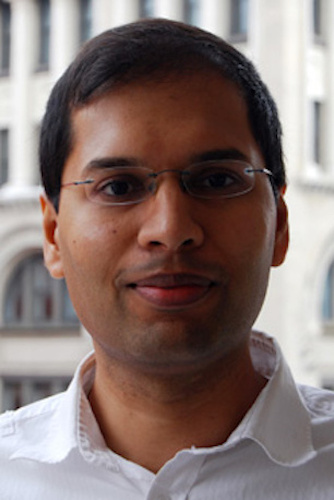
It was a moment of great pride and honour when, for the first time in the long and distinguished history of the ICMs, India hosted the 2010 Congress in Hyderabad. The entire mathematical community of India participated with great enthusiasm by organizing over 30 satellite conferences across the country. There were invited talks at the ICM by Indian mathematicians, and R. Balasubramanian and R. Parimala delivered plenary addresses. Radha Charan Gupta, whose major contribution is on the history of development of trigonometry in India, was the only Indian who received an award at this Congress. He won the Kenneth O. May Prize, named after the mathematician and historian who founded the International Commission for the History of Mathematics. Instituted in 1989, the award recognizes scholarly work in the history of mathematics.
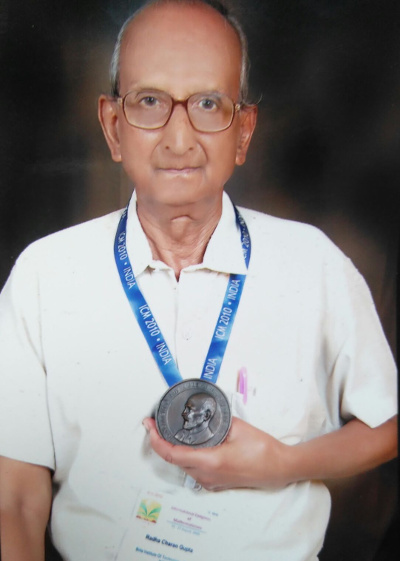
At the forthcoming ICM in Rio de Janeiro, four mathematicians from India, Neeraj Kayal, Mahan Mj, Ritabrata Munshi and Dipendra Prasad, are delivering invited addresses.
What is the present status of the problems from Hilbert’s list, and what major problems are there, still waiting to be resolved? In 1998, Stephen Smale compiled a list of eighteen problems6 in mathematics, similar in spirit to that of Hilbert’s, for the twenty-first century. In fact, Smale’s list contains some of the original Hilbert problems, including the Riemann hypothesis and the second half of Hilbert’s sixteenth problem, both of which are still unsolved. Other famous problems on his list include the Poincaré conjecture (which was resolved by Grigori Perelman in his three papers published on arXiv), and the as yet unsettled P = NP problem and the Navier–Stokes equations. The Clay Mathematics Institute, whose primary objective is to encourage dissemination of mathematical knowledge, has designated some of these as the Millennium Prize Problems.
Footnotes
- Stephen Smale. 1990. The Story of the Higher Dimensional Poincaré Conjecture (What Actually Happened on the Beaches of Rio). The Mathematical Intelligencer. 12(2). ↩
- His eagerness to keep himself abreast of future developments is best expressed in a statement he made regarding an as yet unresolved problem: “If I were awoken after having slept for a thousand years, my first question would be: has the Riemann Hypothesis been proven?”. ↩
- Vasudevan Srinivas. IMU-Net 83: May 2017. ↩
- R.P. Langlands. 1985. Harish-Chandra, 11 October 1923 – 16 October 1983. Biographical Memoirs of Fellows of the Royal Society. 31: 198–225. ↩
- Steve Smale. 1998. Mathematical Problems for the Next Century.. ↩
